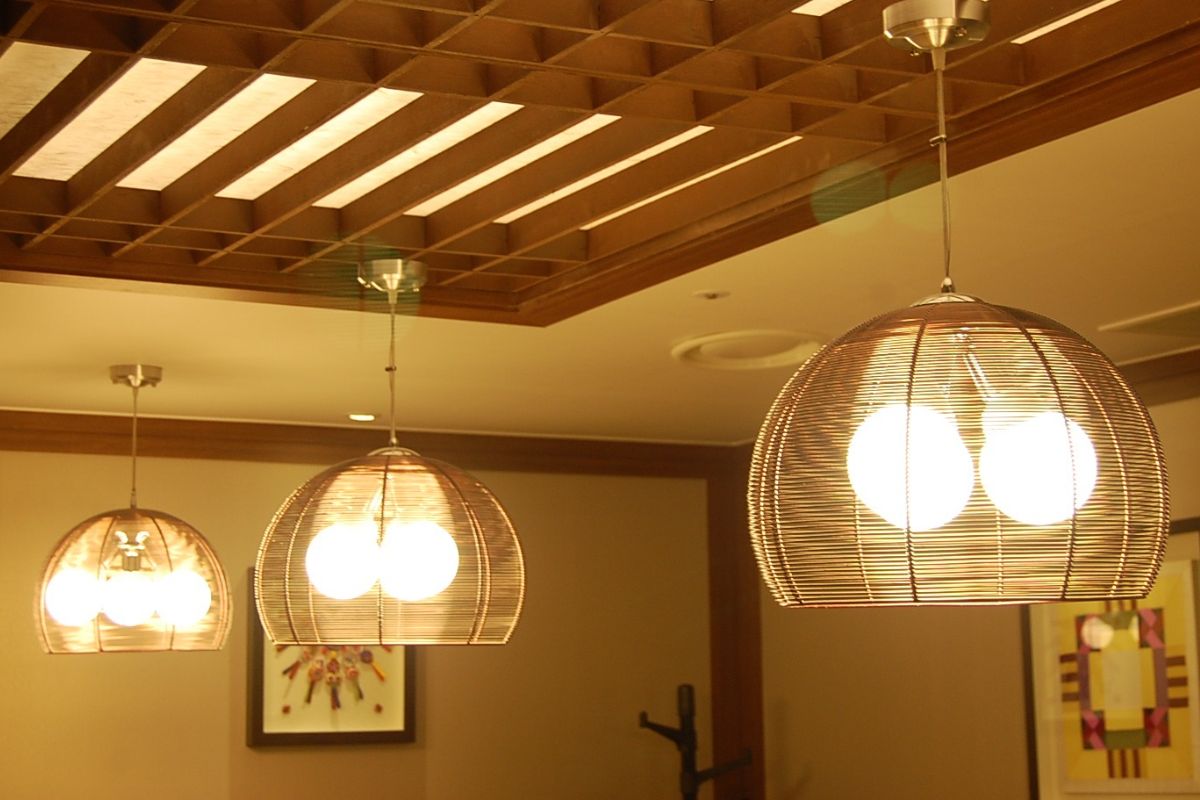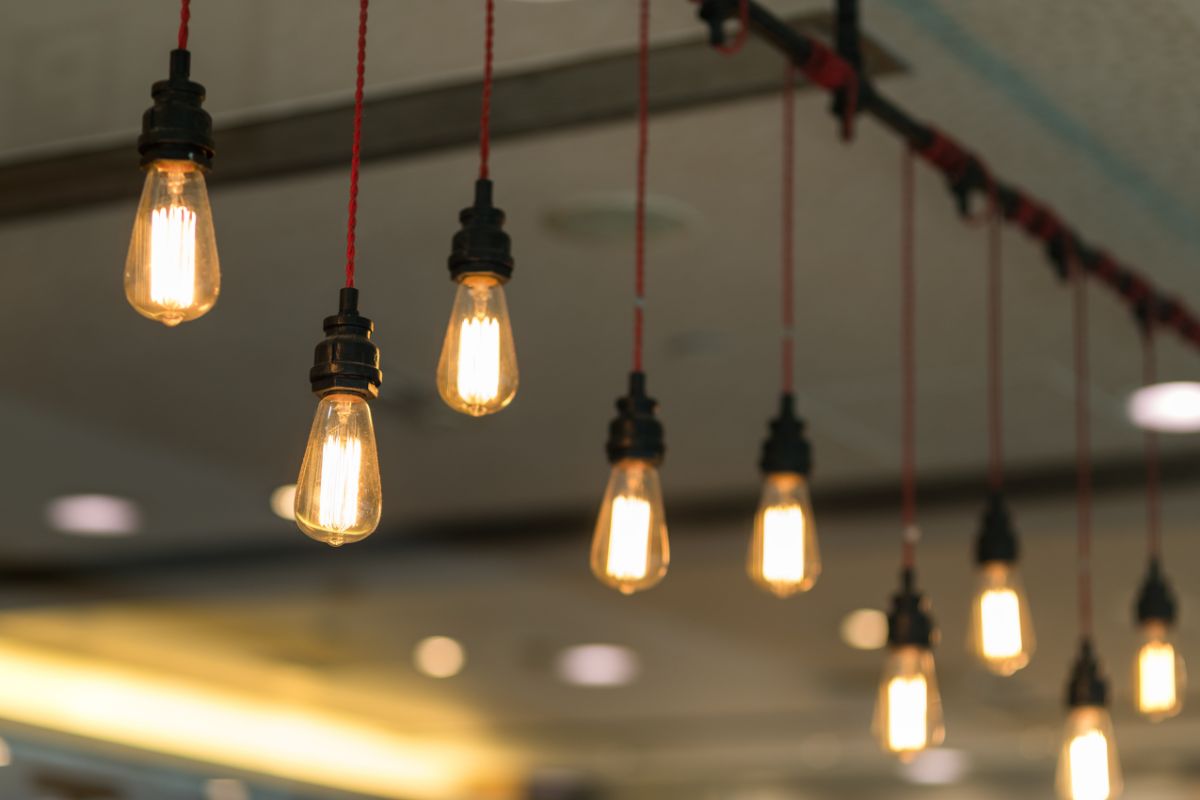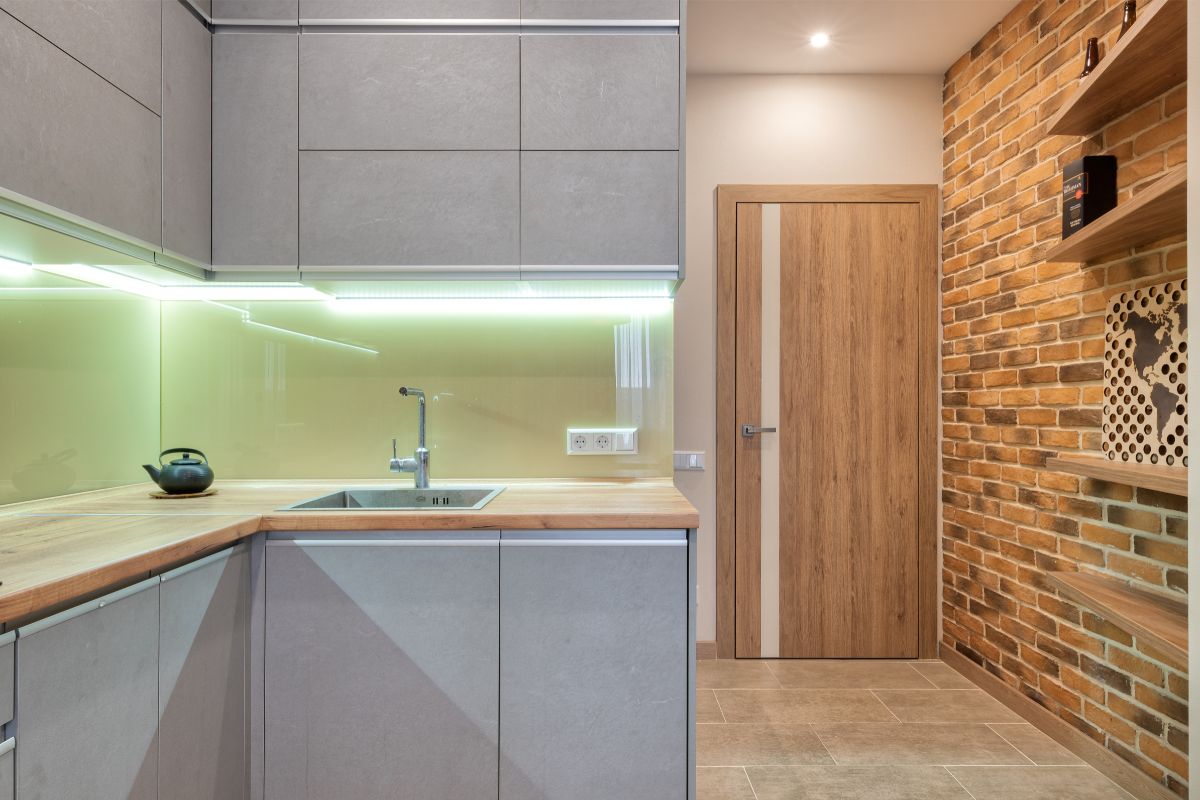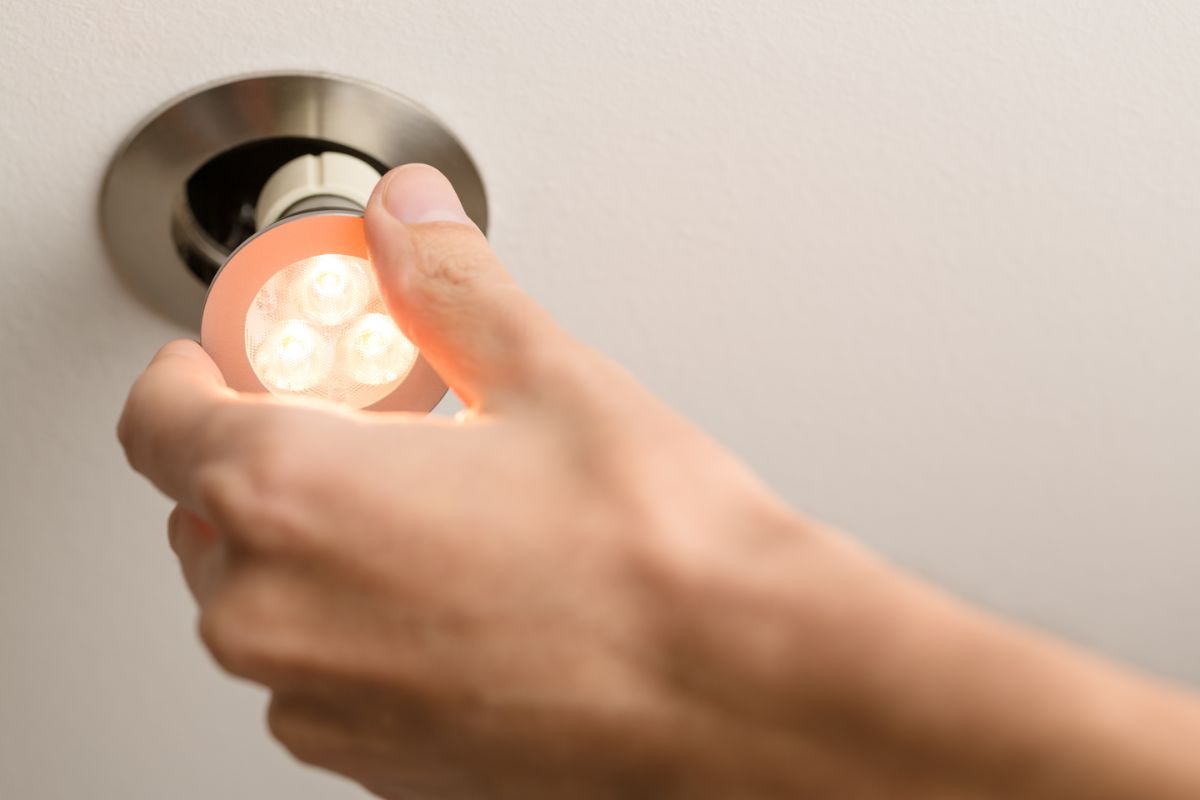Outdoor lighting can make the exterior of our homes far safer, not to mention nicer to look at, which is why this niche of the lighting industry has really been popping in recent years.

The one thing a lot of people don’t quite understand about these lights is where they get their power, after all, they’re outside, and all our electrical utilities tend to be on the inside of our homes.
So, today, I’m going to show you exactly how it’s done!
What You’ll Need
- SDS drill — If you’re drilling through brick or stone
- Drill — If you’re drilling through wood and drywall
- Plenty of insulated wire
- Conduit — If you’re installing the light on a cavity wall
Wiring Outdoor Lights: A Step-By-Step Guide
For this tutorial, I’ll be guiding you through how to mount and wire a standard motion sensor exterior light, the kind you’d fit on either side of your front door or above your garage.
Step 1 — Find The Right Spot
First things first; scout out a spot for your outdoor light to sit on your exterior wall by holding the fixture up to the surface in various locations.
Once you’ve found a potential spot, check what’s on the other side of the wall, as you’ll be running the wiring through this space.
Step 2 — Mark Your Drill Hole
If everything looks good on the other side of the wall, head back outside, then use a marker pen to mark the drill point on the exterior wall.
Step 3 — Choose Your Wiring In Points
You can wire your outdoor lights into your electric system via an existing light switch box, but the power must travel through an intermediary fused spur.
Once you’ve decided on an existing switch to use, choose a spot for your new light switch to go, bearing in mind that you’ll have to run cable between the old switch and the fused spur.
Step 4 — Drill Upward
Now you need to drill through the marking you made in step 2 in order to provide the wiring a passage into your home or alternative structure. But before you begin, you need to take a moment to consider your angle of approach.
Generally speaking, we try to keep drills perfectly straight, but when you’re breaching an internal wall from the outside, it’s essential that you angle the drill upwards, meaning the bit will come out higher on the inside wall than it went in on the outside wall.
This is to prevent rainwater from leaking into your structure through the drill hole.
Step 5 — Run Some Wire Through The Hole
Next up, run a length of insulated wire through the hole you just made in the wall. If it’s a stone or brick wall, the wire can go in as is, but if there are any cavities, you’ll need to push a conduit into place first, then thread the wire through that.

You’ll need to push enough wire through the hole that you’ll be able to run it all the way to the spot you plan on installing your spur box. Leave a little tail of wire hanging from the hole on the exterior as well so you can fit the fixture.
Step 6 — Wiring The Fixture
Strip about ½” of sheathing from the wire you have dangling on the outside of the wall, then connect the cores to the appropriate terminals inside your fixture, as per the manufacturer instructions.
Note — If your fixture contains flex cores, you’ll have to use strip connectors to marry the wires to the light.
Step 7 — Mounting The Fixture
Once all the wiring is sorted on this end, you can dummy the fixture up against the wall, then once you’re happy it’s positioned correctly, drill mounting holes in the wall and secure the fixture in place with screws.
It’s also a good idea to block off any vulnerable spots around your light with some silicone to prevent moisture from reaching the wiring within.
Step 8 — Fitting The Spur Box
Dummy the box against the wall and poke a marker through the mounting holes. Place the box to one side then drill into these holes with an appropriate bit.
Use whatever securing technique is suited to the wall type. For example, if it’s a brick wall, you’ll use rawl plugs, but if it’s drywall, you’ll be better off with toggle bolts.
Next, mount your spur box with a drill and screws. If the box is metal, it needs to be grounded. If it’s plastic, you can forget about grounding, but be careful when drilling, as over-tightening the screws will crack the back of the enclosure.
Step 9 — Shut Off The Utility Power
You’re almost ready to wire your outdoor light to your electric panel, but first, it’s essential that you switch off your main power supply. Never, ever work on live wires.
Even after cutting your main power supply, be sure to check any connected circuits with a voltage tester, just to be on the safe side.
Step 10 — Prepare The Old Light Switch
Okay, so the wire from your light is ready for action. Next, we need to prepare another length of wire that will run from the pre-existing light switch to the spur box, which acts as the bridge that connects power from your main electrical system to the outdoor light.
To do so, open the enclosure of the old switch, pop out one of the removable wire routes, then thread your wire inside the switch box.
Strip a few inches of sheathing from the wire, then make the necessary connections on the outside of the switch’s wire terminal rather than the feed.
You’ll know what goes where because there’ll already be one of each wire (live, neutral, ground) in place, so it’s simply a matter of matching color to color.
Step 11 — Connecting The Switch To The Spur
Now you can run the other end of the wire you just linked to the switch to the “load” terminals of the spur. Again, you’ll be stripping the sheathing and inserting the wires as per the labeling or manufacturer’s instructions.
Step 12 — Connecting The Light To The Spur
Repeat the process for the wire attached to your fixture, only this time, you’ll be fitting the wires into the “load” terminals of the spur.
Once everything is in place, mount the spur on the spur box, turn the utility power back on, and flick the switch to see if your handy work has been a success.
Final Thoughts
And that’s how it’s done, folks. I haven’t gone into any detail about cable routing and management, because there are a number of ways to tackle it, and you’ll just take the approach that most suits your installation, but everything else is right here in black and white.
Before we go our separate ways, just one more reminder to make sure your power is completely switched off when you pop the top on your existing light switch. And before you touch any wires, use a voltage tester to ensure the circuit really is dead.



